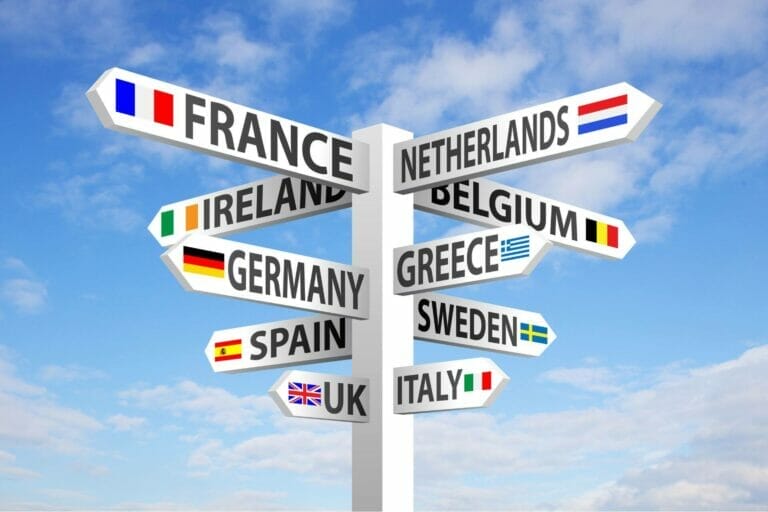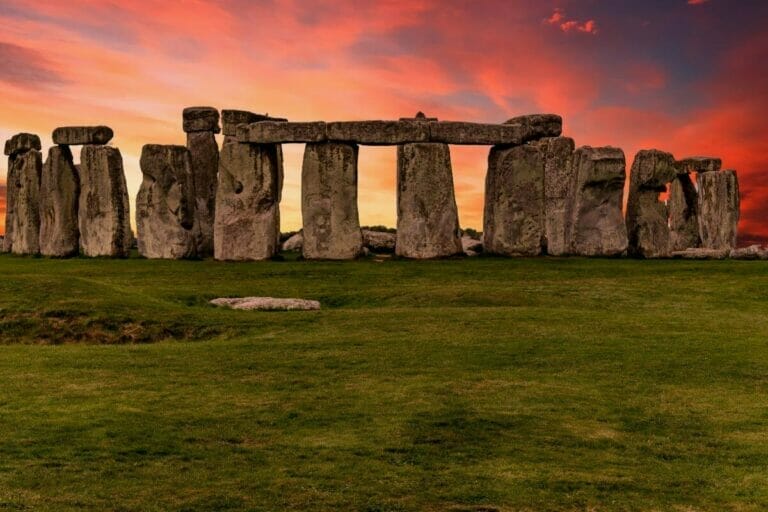The Northern Lights: A Cosmic Ballet In The Sky
Today we are going to whisk you away on an enchanting journey into the world of dancing lights, cosmic particles, and magnetic theatrics. I promise it’s going to be more fun than trying to juggle antimatter, and definitely a lot safer! So, sit back, fasten your seatbelts, and let’s take off into the cosmic abyss to understand the celestial spectacle known as the Northern Lights.
You see, I’ve always been fascinated by the lights, but not just any lights. I’m talking about the ones that paint the polar skies with a cosmic brush, swirling and twirling like a ballet dancer, as if the universe itself is putting on a show. This is the story of the Northern Lights, also known as Aurora Borealis. And no, that’s not the name of a pop star, but something far more amazing!
But before we dive into the phenomenon that’s more popular than the latest video game, let’s answer a burning question. Why on Earth (or rather, in the sky) do we call it the ‘Northern Lights’? Is it because they always appear in the North? Well, you’re on the right track, but let’s find out more!
What are the Northern Lights?
Imagine you’re playing a cosmic game of Ping Pong, with the Sun and Earth as players. The Sun sends over a bundle of charged particles – let’s call them ‘solar marbles’. These marbles are so full of energy that when they reach Earth, they crash into the gas atoms in our atmosphere. It’s a bit like when you drop your fizzy drink, and it fizzes all over the place! But in this case, the fizzing is so spectacular that it lights up the sky in all sorts of magical colours!
The Northern Lights, or Aurora Borealis, are just that – a cosmic game of marbles resulting in a grand light show. The aurora is named after the Roman goddess of dawn, Aurora, and the Greek name for the north wind, Boreas, which is quite fitting considering they’re seen near the Earth’s magnetic north pole. And yes, there’s a Southern version too, but let’s not confuse things right now!
What weather conditions are best to view them?
As much as we’d love to see the Northern Lights whenever we fancy, like switching on a television, Mother Nature has her own remote control. She decides when and where we can view this grand spectacle.
The Northern Lights prefer a grand stage, which is why dark, clear nights are the best times to catch this cosmic ballet. It’s like trying to watch a movie with the lights on – it’s just not as good, right? But turn off the lights, and voila! The magic comes alive. The same goes for the Northern Lights. When’s the best time to see the northern lights? They’re most visible when the night is dark, the skies are clear, and there’s little light pollution. Think of it as a stage set for an exclusive cosmic performance!
The Science Behind the Northern Lights
Now, I know we’ve talked about the Sun’s ‘solar marbles’ causing this amazing light show, but let’s delve a little deeper. You see, the Sun isn’t just a big hot ball of gas. It’s like a massive nuclear reactor, continually undergoing a process called nuclear fusion. This process releases what we call a solar wind, a stream of charged particles speeding away from the Sun at about a million miles per hour. I told you it was more interesting than a video game!
When these charged particles get near Earth, they’re guided by our planet’s magnetic field towards the poles. It’s like Earth is saying, “Come on in, follow me! Let’s put on a show!” As these particles collide with oxygen and nitrogen in our atmosphere, they get excited (who wouldn’t be excited about putting on a cosmic light show?), and when they calm down, they release light. This light is what we see as the Northern Lights.
Different gases create different colours. Oxygen gives off a green light (it’s the show-off of the bunch), and sometimes a rare red light if it’s very high up. Nitrogen produces blue or purplish-red lights. It’s like a natural fireworks display, but instead of gunpowder, we have solar particles and atmospheric gases.
Viewing Tips for the Northern Lights
A question often asked is, “How can we increase our chances of seeing the Northern Lights?” Well, there’s no surefire way, but there are a few tips that can help.
Firstly, timing is important. The Northern Lights are more active during some years than others due to the Sun’s 11-year activity cycle. We’re currently in an increasing phase of activity, which means the Sun is throwing more of those ‘solar marbles’ our way, leading to more frequent and potentially more vibrant auroras.
Secondly, location matters. The further north you are, the better your chances. That’s why Scotland often gets a good show. But as we’ve discussed, they can occasionally be seen further south, so don’t be disheartened if you’re not in the Highlands.
Lastly, remember to check the weather. Clear, dark skies are your friend. Clouds are the enemy of the aurora hunter, blocking our view of the spectacle. So pick a clear night, far from city lights, and cross your fingers!
Where have the Northern Lights been seen?
The best places to see the Northern Lights are in the polar regions as they are frequent visitors, but they’ve also been spotted dancing in the skies of many other places. It’s like they’re on a world tour, gracing us with their presence in various locations!
Where to see the northern lights, Northern Alaska, Canada, bits of Greenland, and northern Scandinavia are some of their favourite spots, where they often perform their captivating light show. If you happen to be in Northern Scotland, you’re in for a treat too! But guess what? The Northern Lights are such a hit that they’ve even made special appearances in southern England, south Wales, and Norfolk. And let me tell you, when they show up in these places, it’s like a surprise gig from your favourite band!
Some of the best seats for this cosmic concert can be found in Muonio in Finland, Jokulsarlon Lagoon in Iceland, and Tromsø in Norway. Unstad, Lofoten in Norway, is a special location – it’s like watching the lights while riding a surfboard! Kangerlussuaq in Greenland offers the unique combination of dog-sledding and Northern Lights viewing – quite the double act, don’t you think?
Abisko in Sweden has the perfect weather for this light show, while Paatsjoki in Finnish Lapland boasts a 90% chance of seeing the lights. So, if you’re a betting person, you know where to go!
Meanwhile, in North America, Yellowknife in Canada and Fairbanks in Alaska in the United States offer splendid views of the Northern Lights. It’s like having front row seats at a blockbuster movie premiere!
The Northern Lights in the United Kingdom
Now, I know what you’re thinking. “We’re in the UK! What’s the point of all this if we can’t see this incredible light show?” Well, hold onto your hats, because I’ve got some exciting news for you!
While the Northern Lights are often associated with the polar regions, they’ve also been known to make surprise visits to other parts of the globe, including our very own United Kingdom! Yes, you heard it right. Even though they’re called the ‘Northern’ Lights, sometimes, they decide to head a bit further south for a bit of a holiday.
In rare instances, these cosmic dancers have been spotted as far south as Kent and Cornwall. Northern areas of the UK, like Scotland, have had some incredible displays, with the skies lit up like a Christmas tree! Sightings have also been reported in Northern Ireland, southern England, south Wales, and Norfolk. So, even if you’re not in the northernmost parts of Scotland, keep an eye out! You might just catch this stellar spectacle.
Remember when I said that the Sun’s activity is like a roller coaster, going through highs and lows? Well, we’re currently in an exciting phase where the Sun is becoming more active. This means that we can expect more frequent and spectacular displays of the aurora in the coming years, even here in the UK!
So, keep your eyes on the skies, dear explorers. You never know when the Northern Lights might decide to put on a show in your backyard! But remember, patience is key when it comes to aurora watching. It’s a bit like waiting for your favourite band to come on stage. It might take a while, but once the show starts, it’s absolutely worth the wait.
I remember the first time I saw the Northern Lights. I was in Norway, and the sight was so breathtaking, it made me forget about the freezing cold. The sky was dancing with colours, and it felt like I was witnessing a secret conversation between the Sun and the Earth. It was a humbling reminder of our place in the universe. Plus, on very rare occasions you can see the Southern Lights!
I’ve also had the good fortune of seeing the Northern Lights right here in the UK, in the Scottish Highlands. It was a rare treat, a reminder that sometimes, the universe brings its wonders right to our doorstep.
In Conclusion
Remember, the universe is vast, and the Northern Lights are just one of its many marvels. So, keep your curiosity alive, never stop learning, and always remember to look up at the sky. Because who knows? You might just catch a glimpse of the universe putting on a show for you.
So, that’s the magical world of the Northern Lights for you! It’s an incredible cosmic performance that reminds us of the beauty and mystery of the universe we live in. Whether you’re in the remote regions of Alaska, the picturesque landscapes of Scandinavia, or right here in the UK, the Northern Lights are a spectacle worth seeing at least once in your lifetime.
And remember, the universe is full of such wonders, waiting to be discovered. So, keep exploring, keep asking questions, and never lose your sense of wonder!







